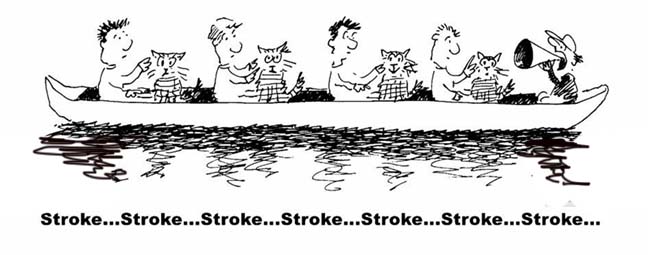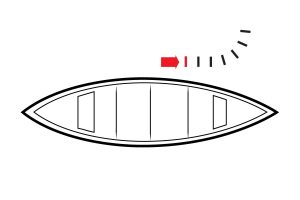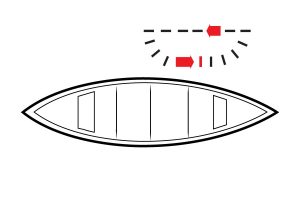Tandem Front Ferry
Category: Video or Photos
ELORA-WESTMONTROSE {photos}
For those who went on the Elora – Westmontrose canoe trip, I’m sure you will agree that although the weather was on the chilly side, it was a fun trip none the less. The water was moving at a decent rate and we had the chance to practice our skills on small scale rapids. Below you will find some photos that were taken to remember the trip! Enjoy:)
REFRESHER TRAINING {Photos}
The May 8th Refresher training went very well. We all met our new trainer, Beth Jones and found her to be very knowledgeable, professional and engaging. I’m sure all of us learned something new, were able to correct bad habits or try a new maneuver, and hopefully have a “light bulb” moment. The training was a good start to the season! The Basic and Intermediate training is sure to be just as good:)
Though the weather was somewhat chilly, it was a lovely day and nice to be on the water. I’m happy to say that no one dumped!!
Here are some photos of our trip from Glen Morris to Birley Gates:
One thing that Beth talked about during her initial briefing was dressing for the weather. With this cooler weather, not many of us want to get our feet wet and be stuck with cold feet while in the canoe. Beth suggested neoprene socks that you can actually wear with your water sandals. Here are some places to check them out:
SAIL Canada – $27.99
MEC – $15.00
AMAZON.CA – $28.98
The price range is wide, so do your research if you decide to get a pair. Hopefully the weather will soon be warm enough where they won’t be needed!
POND TRAINING FUN! {Photos}
Many thanks to Lynn Warmington for all her efforts in planning, organizing and executing our canoe training thus far. Your time and expertise is greatly appreciated. Many thanks are also extended to her helpers who assisted and lent their time either by mentoring, coaching, towing the canoe trailers or taking photos.
The weather may not have been the greatest, but it was fun! Before we begin training on the river, here are some photos taken at the Pond Training! Enjoy:)
KNOW YOUR STROKES!

Every year, OSSCC offers canoe lessons to teach you safe canoeing practices, and canoe strokes and skills to navigate safely on the water. Whether you are a newbie to the club or a member who has been with us for a while, it never hurts to review and practice the basic canoe strokes we learn in our courses and use on our many trips. Each stroke has a purpose. Do you know what they do? Below are links to resource materials to assist with providing a better understanding of basic canoe strokes we should know and have learned in our lessons.
J-Stroke & Canadian C-Stroke (Stern) – includes video
Draw and Cross-Bow Draw Stroke
Videos
Path of the Paddle: Double Basics (Bill & Paul Mason)
How to Steer and Paddle a Canoe – Forward Stroke – Bruce Lessels
How to Canoe – 3 Key Strokes all Paddlers Should Know -PaddleTV
Tadem Canoe Basics (Paul & Willa Mason)
Tandem Canoe Essentials (Paul & Willa Mason)
Essential Strokes for Tandem Maneuvers – Westwood Outdoors
Parts of a Canoe/Paddle and Strokes – Northern Tier High Adventure
ARE YOU READY? {Training Spots Filling up Fast}
With the 2019 canoe season almost upon us, it seems prudent to provide some resources to review canoe skills for our club members. All our training sessions provide valuable lessons no matter what your skill level and can certainly be taken more than once – you will always learn something new or possibly master a maneuver you couldn’t quite get last year. You can never be over trained when it comes to canoeing!
If you haven’t yet signed up for training, please check out the schedule here and contact Lynn Warmington (lynnwarmington1@gmail.com) asap as spots are filling up fast. We want everyone to enjoy their canoe outings this year and feel confident and safe while doing so! Whether you are content to enjoy the simple tranquility of our “Easy Breezy” outings or want more challenges with our longer and faster moving water trips, there is something for all skill levels. Check out the schedule here or here.
That said, in the following video, Paul Mason and his daughter Willa demonstrate tandem (bow and stern) basics in a canoe. Included is how to properly get in a canoe without tipping, positions in the canoe, and basic stern and bow strokes.
Pond training (free) at the Victoria Pond is strongly encouraged on April 23, 26, and 30. This is the perfect opportunity to practice strokes and other skills, getting in and out of the canoe, etc. before we actually get on the rivers and lakes. You might also want to consider our first “Easy Breezy” on May 9th at Hespeler Pond. Details to follow.
If you have any questions, comment below or contact: info@oldsaltsclub.com
CELEBRATING SENIORS!
Hello OSSCC Members!
The OSSCC Board is happy to share some wonderful news!!
Our club was chosen by the City of Waterloo to be part of a city initiative called “Celebrate Seniors“. This is a three part campaign featuring City of Waterloo senior groups that are actively contributing to the health and wellness of seniors in the Waterloo community.
Why? Because they want to showcase senior groups that are making a difference. As seniors, we are an integral part of the community with lots to contribute. By staying active, we maintain our overall health not just physically, but mentally and socially as well. Our canoe club covers all aspects of this in spades, so lets give ourselves a big, collective pat on the back.
We are very pleased that our club was asked to participate in this campaign. Larry Martin and Pat Kalyn kindly volunteered to be our spokespeople and participated in a lovely interview/video which is now featured on the City of Waterloo “Celebrate Seniors” web page. You can check out the write up and video here. If you like it, leave a comment after the video!
Thanks again to Larry and Pat for representing us so well!!!!!!
J-Stroke & Canadian J-Stroke (Stern)
J-Stroke Basics (Stern)
The canoe J-Stroke is probably the most important canoe stroke to learn yet most recreational canoeists don’t even know it exists. Every person who has ever sat in a canoe knows how difficult it is to keep it going straight. The reason for this is that with every stroke of the paddle, the canoe wants to turn to the opposite side. The canoe J-stroke is the remedy to this problem and actually allows the canoeist to correct the direction of the canoe while paddling forward. This is a steering stroke used extensively by the stern paddler in tandem canoeing.

To perform this stroke, be sure that you are holding the canoe paddle properly and that you are sitting up straight.
- The J-stroke begins with the forward stroke and then the correction phase.
- When your shaft hand reaches the point between your knees and hip, twist the power face of the blade away from the canoe and out.
- Rotate the grip hand so that the thumb moves forward and down.
- Keep a fairly loose grip with the shaft hand on your paddle to allow the shaft to rotate.
- This movement will allow you to “pry” (push out) the blade out off the canoe’s gunwale, like a “J” and correct the direction of the canoe. (The Pry Stroke will be discussed in another post)
- Slice the blade out of the water and carry it flat (parallel) over the water and forward to begin the stroke again.
Tips:
- J-stroke can be used as often as necessary, depending on the winds and currents, to keep the canoe moving in a straight line.
- The more accustomed you become to this stroke, the more you’ll know how much to push out at the end.
- The bow person (front of the canoe) should paddle on the opposite side from the stern person and should use the forward stroke. Both bow and stern persons should paddle in unison and use the same power of strokes to be most efficient.
Canadian J- Stroke
This stroke is similar to the J-stroke only the paddle stays in the water.

- Starts off the same as the J-stroke, but rather than pulling the blade out of the water at the end, the blade is “knifed” forward under the water. Then you are ready for the next power stroke without taking the blade out of the water.
- If done carefully, there is no sound from the paddle, making it possible to paddle in calm water without sound. This version of the J-stroke is more relaxing & doesn’t make you as tired on longer trips.
Both strokes are demonstrated in the following video by Kevin Callan:
Credits:
George Sayour- Author (article) January 3, 2018
Canoe Paddle Strokes – Wikipedia
The Canadian Stroke – Kevin Callan
Photo: By MooseHead88 – Own work, CC BY-SA 3.0
Paddle Canada – Canoe Strokes Resource Document
How to Paddle a Canoe: Strokes and Techniques – Erich Volkstorf
Path of the Paddle: Double Basics
 In keeping with providing resources to our OSSCC members to prepare you for the upcoming canoe season, here is a short film from the late canoe guru Bill Mason and his son Paul where they demonstrate the basic doubles paddling strokes and how to apply them in various combinations. It is interesting to see how the strokes are applied in faster moving water as well as still water, however, the emphasis is always on working as a well-coordinated team. Although the film, is circa 1977 from the National Film Board of Canada, the information provided is still pertinent. Enjoy!
In keeping with providing resources to our OSSCC members to prepare you for the upcoming canoe season, here is a short film from the late canoe guru Bill Mason and his son Paul where they demonstrate the basic doubles paddling strokes and how to apply them in various combinations. It is interesting to see how the strokes are applied in faster moving water as well as still water, however, the emphasis is always on working as a well-coordinated team. Although the film, is circa 1977 from the National Film Board of Canada, the information provided is still pertinent. Enjoy!
Path of the Paddle: Doubles Basic, Bill Mason, provided by the National Film Board of Canada

